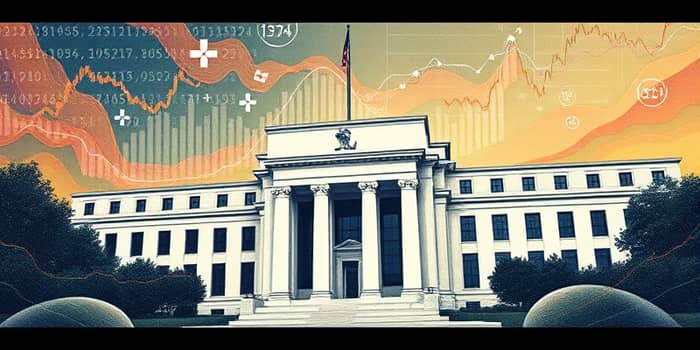
In an era marked by rapid global shifts and persistent inflationary pressures, the Federal Reserve has emphasized a measured and rigorous approach to monetary policy. By anchoring decisions to evolving data, the central bank demonstrates its unwavering focus on fulfilling its dual mandate, even as geopolitical developments and trade uncertainties cast a shadow over the economic outlook.
With the federal funds rate held at 4.25 to 4.50 percent, policymakers have signaled that patience and adaptability remain paramount. Rather than preemptively shifting policy tools, the Fed will await clear evidence of sustained progress toward its inflation target, ensuring that employment gains do not spur unwarranted price increases.
The U.S. economy continues to expand at a solid pace, driven in part by rigorous and data-centered policy framework that adjusts to incoming indicators. Private domestic final purchases grew by 2.5 percent, reflecting healthy consumer spending, while net exports swung due to frontloaded imports ahead of tariff deadlines. These trade dynamics have introduced volatility into the headline GDP figures.
Meanwhile, the labor market remains robust, with unemployment hovering near historic lows and payrolls rising steadily. However, business and household sentiment has dipped, largely due to uncertainty around trade policy and potential tariff escalations. Consumers and firms alike are adopting cautious stances in planning and investment decisions.
At its June meeting, the Federal Open Market Committee chose to hold the federal funds rate steady at 4.25–4.50 percent for the fourth consecutive session. This decision underscored a patient and adaptable policy stance, allowing the Fed to maintain optionality as it assesses whether inflation will return decisively to the 2 percent goal.
The Committee also continues with quantitative tightening of its balance sheet, steadily reducing its holdings of Treasury and mortgage-backed securities. By shrinking its asset portfolio, the Fed effectively drains reserves from the banking system, reinforcing tighter financial conditions without altering the policy rate.
FOMC communications emphasize responsiveness to a wide range of incoming information, including labor market metrics, inflation readings, financial conditions, and global developments. Notably, recent statements dropped language suggesting that inflation was moving closer to target, signaling heightened vigilance against upward price pressures.
By reaffirming its unwavering commitment to data dependency, the Fed aims to anchor expectations and discourage speculation about premature rate cuts. This hawkish posture reflects concern that easing too soon could unmoor inflation expectations and require deeper tightening later.
According to the median projections of FOMC participants, only two rate cuts are likely in 2025, a downward revision from earlier forecasts of four. Core inflation is expected to run near 2.8 percent in 2025 before gradually declining toward the 2 percent target in subsequent years.
This longer-term cautious outlook for rates implies that policy will remain restrictive until clear, sustained disinflationary trends emerge. A return to sub-3 percent rates is unlikely before 2027 under current expectations.
Initially, traders had priced in multiple rate cuts beginning in mid-2025, with some bets on reductions as early as July. However, the Fed’s hawkish communications have prompted a reassessment, keeping bond yields elevated and injecting volatility into equity markets.
Market participants now interpret terms like “solid” or “strong” economic activity as signals that the Fed perceives minimal slack in the economy. This reading reinforces the view that monetary policy will remain restrictive for an extended period.
As the Fed navigates the path forward, key uncertainties include the impact of ongoing trade negotiations, potential fiscal shifts, and the evolution of labor market dynamics. Any significant deviation in inflation trends or employment figures could prompt a reassessment of the policy trajectory.
The Committee remains prepared to tighten further should inflation risks intensify or to ease policy if the economy slows sharply. This flexibility underscores the Fed’s commitment to its dual mandate without succumbing to external pressures.
By maintaining a vigilant, data-driven stance, the Fed seeks to thread the needle between preventing runaway inflation and supporting sustainable employment growth. Its approach highlights the importance of clear communication in guiding market expectations.
In this evolving environment, businesses and households should plan for a tighter monetary backdrop while remaining attentive to Fed statements and incoming economic releases. Patience and preparedness will be essential as policymakers assess the next chapters of the recovery.
References













